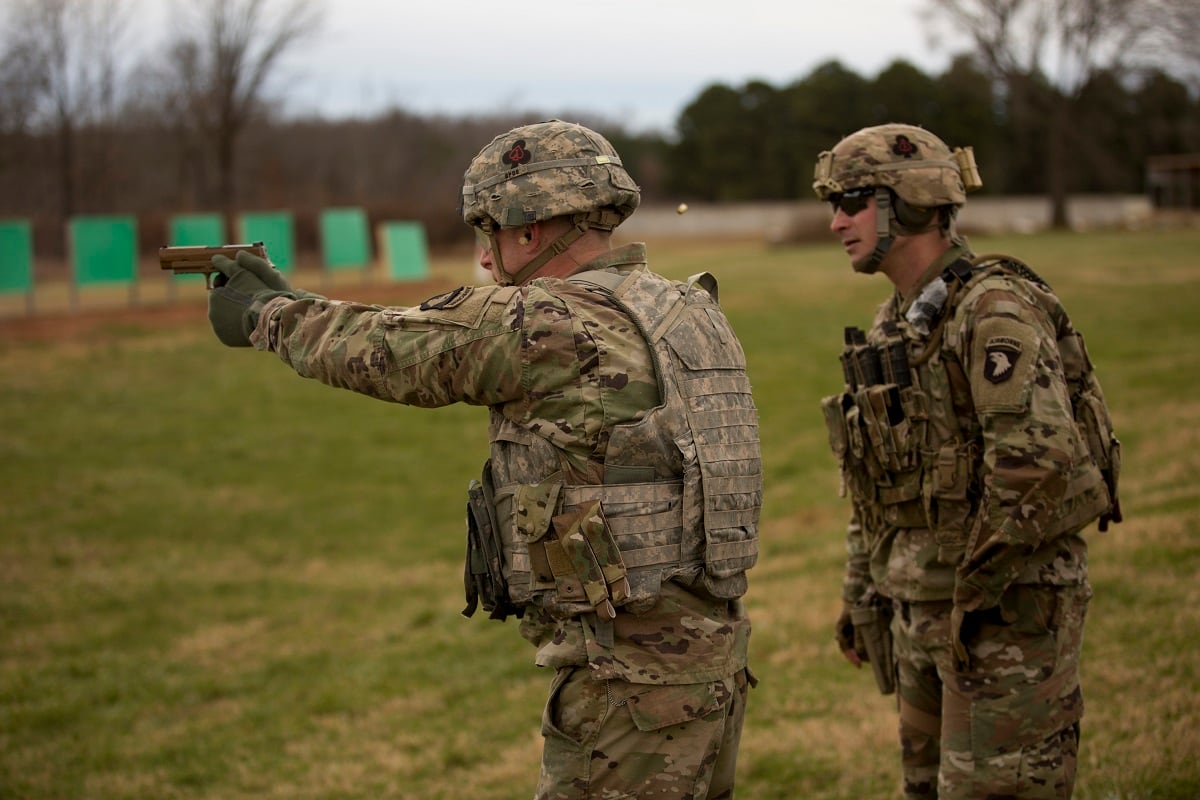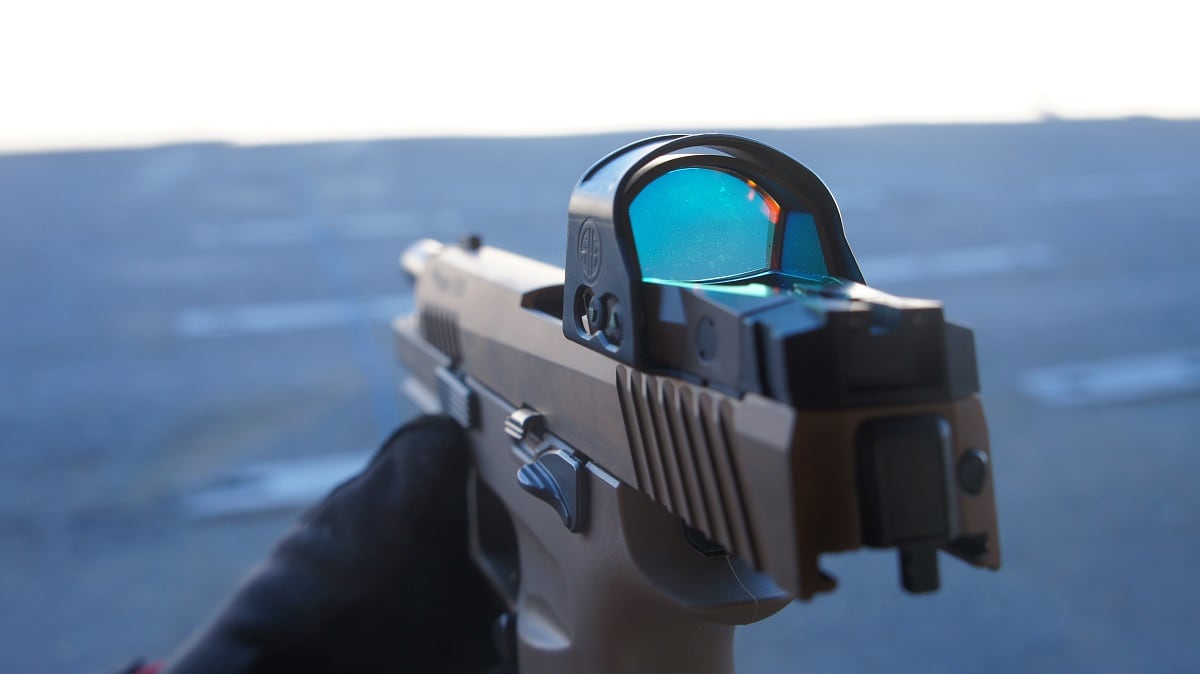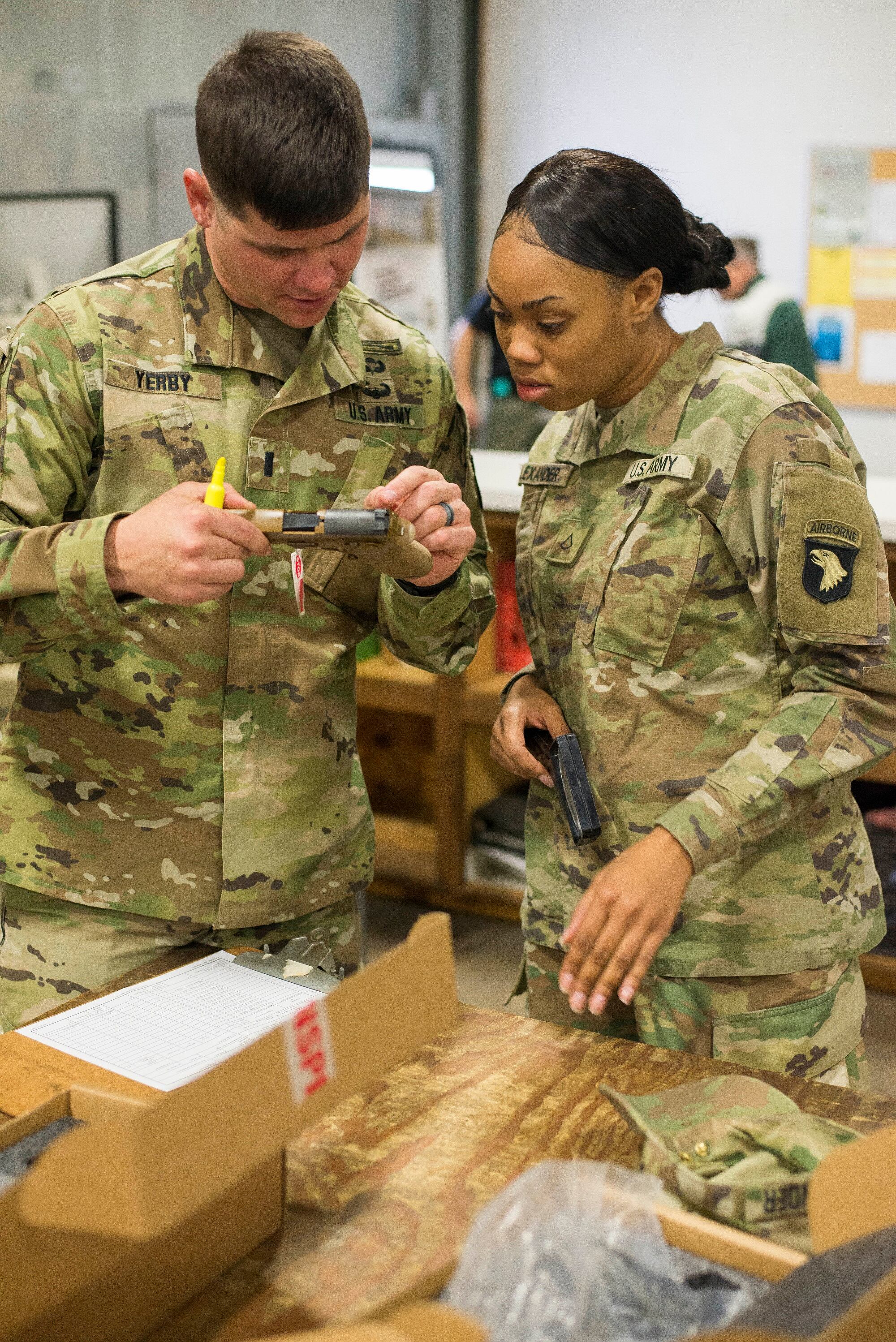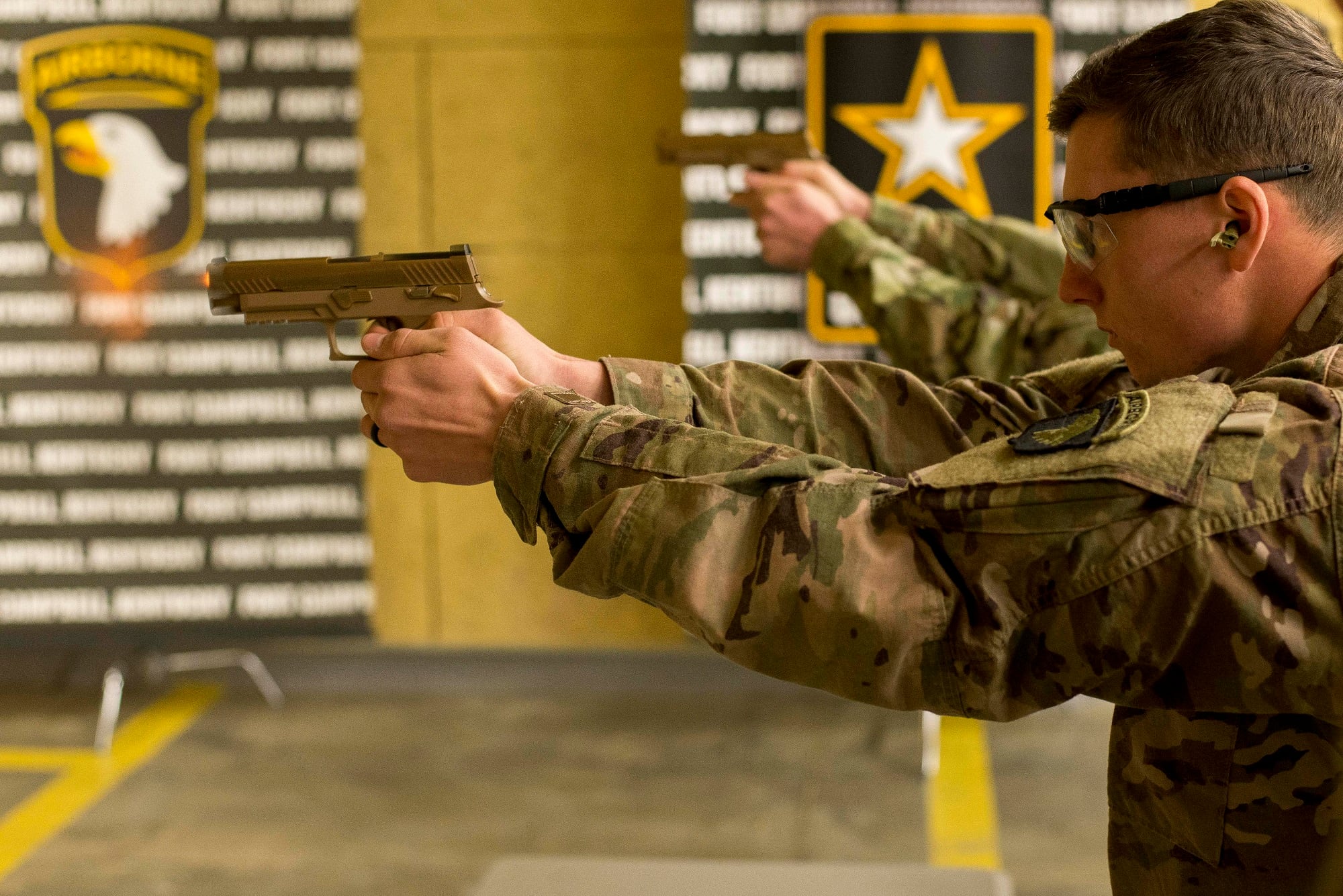The Army’s new handgun meets “all safety and operational requirements,” officials said Wednesday, after a recently published report revealed several issues with the Sig Sauer-made weapon.
Early evaluations of the Army’s new handgun, the M17, last year showed test failures when the pistol was fired with the standard ball ammunition, stoppages, and double ejections.
Those findings were revealed in a recently published report by the Defense Department’s Office of the Director, Operational Test and Evaluation. The office reviews major programs across the Defense Department.
The problems noted by the office had not been previously disclosed by the Army or other entities involved in the Modular Handgun System’s development. Though the report was compiled from April through September of last year, it was not sent to Congress nor publicly released until January.
The Army selected the Sig Sauer handgun as its first new service-wide sidearm since the mid-1980s, replacing the Beretta M9. The report notes that the Army intends to purchase 238,000 pistols, while the other three services may buy as many as 224,000 pistols under the same contract.
The contract is for 10 years and is worth 580 million.
The 101st Airborne Division was the first unit to field the weapon. Army Times visited the unit in December and observed soldiers at a pistol range qualification.

The Pentagon report noted the following problems:
- Double ejections of an unspent ball ammunition round along with a spent round during firing.
- A higher number of stoppages experienced by shooters with both the XM17 and XM18 handguns when fired with ball ammunition as compared to the special purpose ammunition.
- Both weapons failed to meet the Mean Rounds Between Stoppage reliability requirement with ball ammunition.
- Two trigger-splintering incidents that officials believe were related to an engineering change made by Sig Sauer to correct a drop test deficiency in which testers saw the weapon fire when dropped.
- More than half of the stoppages reported were likely caused by use of the Army Marksmanship Unit’s “high pistol grip” method, which can result in the shooter engaging the slide catch lever and cause the slide not to lock in the rear position.
Officials at the Army’s Program Executive Office-Soldier responded to detailed questions from Army Times and stated that the problems identified in the report have been investigated by a specially assigned team.
RELATED

PEO-Soldier spokeswoman Debra Dawson emphasized in an email response that the currently fielded MHS pistols “meet all safety and operational requirements.”
Because the weapon met or exceeded requirements in testing with special purpose ammunition, it was able to be fielded to troops for training and combat operations, she said. Once the ball ammunition issue is resolved, soldiers will have that ammo at their disposal as well.
PEO-Soldier also said the weapon is still safe to operate with ball ammunition.
“It is simply not meeting its reliability requirements with the ball ammunition and has experienced stoppages and issues with double ejections,” Dawson said in a statement.
Officials also said the two trigger-splintering incidents were “not the result of a design flaw or ongoing manufacturing problem.”
Those were the only two pistols out of an estimated 10,000 purchased that have exhibited that issue.
In its report, the DOT&E recommended either redesigning the slide catch lever on the pistol or changing operator training to avoid the stoppage. More than half of the stoppages caused by shooters engaging the slide catch lever happened among eight of 132 shooters who were using the “high pistol grip.”
PEO-Soldier officials said that the Army will correct the “anomaly” by modifying marksmanship training.

David Bahde, a retired SWAT lieutenant and firearms subject matter expert who has testified in federal court proceedings on firearms issues, provided some context on the scale of the reported problems.
“To my knowledge, no small arm fielded by the military has passed from the testing to the issuing phase without issues,” Bahde said.
Bahde, who reviewed the four-page DOT&E report, also qualified his responses by saying that to best understand the issues listed, he would have to view the tests in person or through video recordings.
RELATED

Military testing standards far exceed civilian wear and tear and are costly, he said. For that reason, there are not a lot of industry testing comparisons.
The double ejection issue is often a magazine issue, Bahde said. Higher stoppages with the ball ammunition might simply require a change in the recoil spring rate for the slide to fully operate, he added.
The team’s analysis identified “a number of modifications expected to enhance” the handgun’s performance, Dawson wrote.
The currently fielded pistols meet all requirements for overseas operations, she said.
But once the changes are approved through the Army’s testing process, they will be added to the production of new pistols, and the Army will retrofit any fielded pistols later.
Dawson said that one modification to resolve the double ejection issue might include “minor adjustments to the magazine and hammer ramp to consistently feed the ball ammunition into the weapon and consistently eject each spent cartridge as it is used.”
Tom Taylor, a spokesman for Sig Sauer, said most of the items highlighted in the report were from early testing periods for the handgun.
He said the company stands by the several thousand handguns shipped to date, and the many more to be ordered by the Army and other services.
During the Army Times visit to Fort Campbell, Kentucky, soldiers overwhelmingly preferred the weapon over its three-decades-old predecessor, the Beretta M9.
At least one item in the report, the drop test problems, had already been addressed publicly by the Army and Sig Sauer.
Dawson wrote that the MHS does not have a drop test deficiency, noting that Sig Sauer had corrected the issue prior to the start of testing, and the weapon passed the Army’s drop test.
Todd South has written about crime, courts, government and the military for multiple publications since 2004 and was named a 2014 Pulitzer finalist for a co-written project on witness intimidation. Todd is a Marine veteran of the Iraq War.




